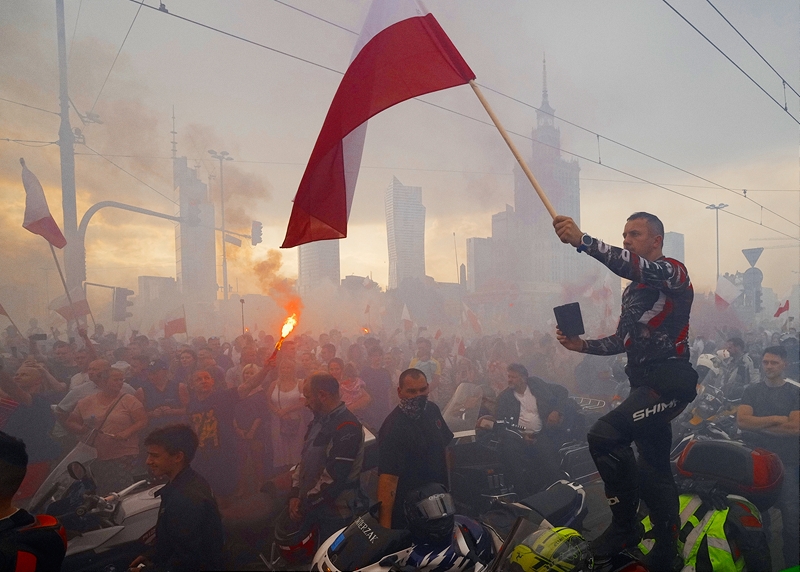Just as in every year, on August 1, at exactly 17:00, Warsaw holds its breath for a minute and the city stops at the sound of sirens. Drivers and pedestrians cease their movement and pause to honor those who fought in the 1944 Warsaw Uprising 77 years ago.
During the “W Hour” (the hour the Uprising started) the largest crowds were gathered in the city center, many with Polish flags in their hands.
“The will to regain freedom, to free Warsaw and to free Poland was so strong, that the uprising could not be stopped. There was no other way. That energy, that great desire for freedom, had to be realized,” said president Andrzej Duda during the official ceremony commemorating the 1944 Uprising.
“The young did not hesitate to risk their own lives to retake their homeland. Later, those same people who survived the shadows of communism, despite never being free, raised the next generations to love that same freedom,” said Duda.
The president added that, for the majority of insurgents, the Uprising’s fateful 63 days were a restless time, yet they fought till the end, supported by Warsaw’s citizens, who gave all their hearts. These supporters cared for them, cooked for them, and endured horrible conditions surviving in basements.
The president’s chancellery posted a photo in which President Duda met with the Warsaw Uprising survivors.
“They did not hesitate to risk everything, including their lives, to regain freedom, their city, and their country. They were ready to pay any price.”
The 1944 Warsaw Uprising was the largest insurgency of its kind in German-occupied Europe.
According to the plan of the Home Army (AK) leadership, the Uprising was meant to liberate Warsaw from the Germans prior to the entry of the Soviet Red Army. The aim was for the Polish underground to present itself to the Soviets as the city’s hosts and emphasize that they were the only legal government in an independent Poland.
Although the Uprising was expected to last a only few days, it lasted for over 2 months, until October 2. The insurgents were supported by many civilians who aided them with food and supplies, took care of the wounded, and built barricades.
During the Uprising, more than 18,000 insurgents were killed, and 25,000 were wounded. Around 180,000 civilians were killed, and 500,000 were chased out of the town. Almost all of Warsaw was levelled or blown up by the Germans in retaliation.
The Stalin forces took over part of the city in September 1944 but stopped at the Vistula River and did not provide any substantial aid to the insurgents.
Title image: Warsaw residents with torches in national white-and-red colors gather to mark the 77th anniversary of the start of the 1944 Warsaw Rising, an ill-fated heroic struggle against the occupying Nazi Germans, Aug. 1, 2021, AP images.






